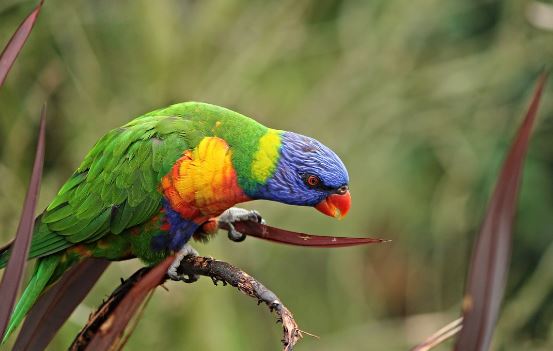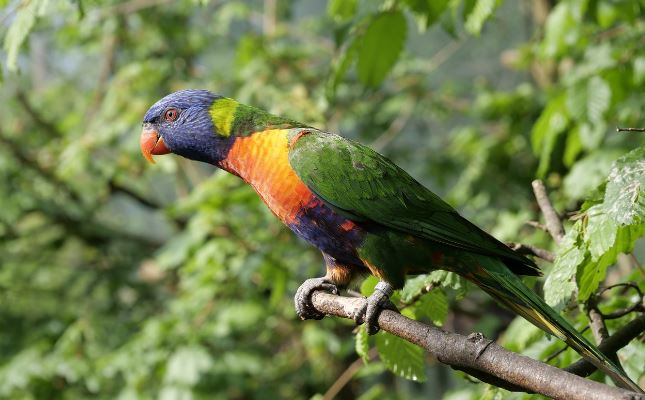Do you have curious about where do parrots live? Before going to adopt a parrot, everyone want to know that where they came from. This is question of million’s parrot lovers.
As you know that parrots live in worldwide, but it can be a fascinating subject about where your parrot originally belong from.
In short answer of your question is parrots live worldwide, but predominantly in Australia, Asia, South America, and Africa. The primary habitats of parrots are warmer weather that typically in association with jungle or rainforest.
Geographical Distribution of Parrots
Mostly, parrots prefer to live in tropical and subtropical regions, with their range extending across several continents. The primary spots where parrots are indigenous include:
South America
South America is home to the largest number of parrot species. The Amazon Rainforest that scale in many countries like as Brazil, Peru, and Colombia, it is a particularly rich habitat for these parrots. The dense and humid forest supports to provide the enough source of food, including fruits, seeds, and nuts.
Amazon Basin: This region is most comfortable for the diversity of parrot species, such as macaws, parakeets, and conures. In these areas, thick canopy provides the shelter and nesting sites. As well as, the diverse of flora offers a constant food supply.

Andes Mountains: Andean parakeet, get to adapt the cooler and high-altitude environments of the Andes. These parrots are well-known, due to their unique adaptations to survive in less humid conditions.
Central America and Mexico
The tropical and subtropical forests of Central America and Mexico are well known, due to parrot diversity. Species such as the scarlet macaw and the green-cheeked parakeet are easily thrive in these locations.
Rainforests: In Costa Rica and Guatemala countries found the dense forests. These forests support the ideal conditions for parrots, along with plentiful food and nesting sites.
Coastal Areas: Some parrots are found in mangrove forests and coastal woodlands. In this regions, they take enjoy to feed on fruits and seeds from the unique vegetation.
Australia and Oceania
Australia and islands of Oceania are also major spots, where various species of parrots are found. This area contains the diversity of environments. So, it has led to a wide variety of parrot species that each gets the adaptation for different habitats.
Also Read: Do Cockatiels Talk? A Guide to Their Vocal Talents
Eucalypt Forests: Australian parrots like the cockatoo and the rainbow lorikeet commonly thrive in eucalypt forests. These trees offer the essential feed resources, such as nectar and seeds.
Savannas and Grasslands: Instead of forests, some parrots inhabit savannas and grasslands. For example, budgerigar is well adapted to arid environments. And they have ability to travel in long distances for looking food and water.
Asia
In the Asia, mostly parrots like to live in the tropical and subtropical regions of Southeast Asia and South Asia.
Tropical Rainforests: Indonesia, Malaysia, and India conduct the rich rainforests. So, here brightly colored lorikeets and the intelligent Alexandrine parakeet are easily found to inhabit.
Mangroves and Coastal Forests: These areas provide unique habitats for parrots that contribute to offer the diverse food sources and nesting sites.
Environmental Preferences and Adaptations
Parrots always exhibit a wide range of environmental preferences and adaptations that helping them to thrive in various habitats. Here are some essential factors that can affect where parrots live:
Also Read: Can Parrotlets Talk? Myth or Reality
Climate
Preference for Warm Climates
- Most parrots are found in tropical and subtropical regions.
- In the growing of vegetation, warm temperature plays the vital role. Due to this vegetation, parrots can easily get various kinds of food and effective shelters.
Adaptation to Cooler Climates
- Some species, like the Kea in New Zealand and the Andean parakeet, have adapted to cooler, high-altitude environments.
- Due to their thicker plumage, they easily cope with lower temperatures.
Vegetation
Dependence on Forests
- Dense forests are primary habitats due to their abundant food resources.
- Parrots are totally reliance on dense trees for getting to nesting, roosting, and protection from predators.
Dietary Preferences
- Parrots primarily eat fruits, seeds, nuts, and nectar.
- The Lories and lorikeets have specialized brush-tipped tongues to feed on nectar.
Adaptation to Different Vegetation Types
- Parrots in savannas and grasslands feed on seeds from grasses and shrubs.
- Species in mangroves and coastal areas adapt to the unique vegetation and food sources available.
Altitude
Lowland Tropical Forests
- Most parrots prefer lowland tropical forests where food is plentiful and temperatures are stable.
High-Altitude Adaptations
- Parrots like the Andean parakeet live in mountainous regions.
- Their physiological changes to cope with lower oxygen levels and colder temperatures.
Water Sources
Proximity to Water
- Parrots need access to fresh water for drinking.
- Many parrot habitats are near rivers, lakes, or regions with regular rainfall.
Influence on Food Availability
- Water sources support the growth of vegetation that provides food.
- Rainforests, with their high rainfall, offer continuous food supplies.
Nesting Sites
Tree Cavities
- Most parrots nest in tree cavities that provide protection from predators and harsh weather.
- Large, old trees are particularly important as they often have suitable nesting holes.
Alternative Nesting Sites
- Some species use cliffs, termite mounds, or ground burrows for nesting.
- Adaptations to use alternative sites are crucial in areas where tree cavities are scarce.
Unique Habitats and Conservation Efforts
Parrots are most eminent birds for their unique habitats. But, they have to require specific conservation efforts to protect them. Here are some outlined about parrot habitats and conservation strategies:
Also Read: Can Macaws Talk? Exploring Macaw Vocalizations
Unique Habitats
Specialized Habitats: Mostly, parrots are found in specific kinds of trees, such as the golden-shouldered parrot that is more vulnerable to predation due to habitat changes.
Tropical and Sub-Tropical Regions: Primarily, parrots like to live in tropical and sub-tropical regions. In which, the majority of species get inhabiting heavily forested areas in Central and South America, Africa, and Australasia/Oceania.
Cavity Nesting: Most of parrot species, in Australia, they are cavity nesters. And, they are totally reliance on specific tree species for nesting sites that are often threatened by logging and competition from introduced species.
Conservation Efforts
Habitat Protection and Restoration: Should be protect and restore habitats for parrot conservation. This includes recreating critical habitat features such as food supplies, nest sites, roost sites, and water supplies.
Ex-Situ Conservation: Captive breeding, artificial propagation in zoos and other controlled environments can support to supplement declining wild populations and prevent extinction.
Control of Invasive Species: Should be maintaining parrot populations to control invasive species that prey on parrots, including feral cats and rats.
CITES Resolutions and Regulations: Should be implementing CITES resolutions and regulations. They effectively can help prevent over-hunting and trade of parrots that are significant threats to their populations.
Research and Monitoring: It is necessary to inform effective conservation strategies and monitor population trends. So, should be conducting research on parrot biology, ecology, and population dynamics
FAQs (Frequently Asked Questions)
Where are Parrots Commonly Found in The Wild?
Mostly, parrots are found in tropical and subtropical regions. This includes South America, Central America, Southeast Asia, Australia, and Africa. They can thrive in rain-forests, savannas, grasslands, and coastal mangroves.
Do Parrots Live in Rainforests?
Yes! Many parrot species can easily live in rain-forests. These dense forests contribute to provide an abundance of food, such as fruits, nuts, and seeds. As well as, they also offer numerous nesting sites in tree cavities.
Can Parrots Live in Temperate Climates?
Most of parrots are found in tropical and subtropical regions. But, some species (Kea in New Zealand and the Andean parakeet) have adapted to cooler and temperate climates.
Do Parrots Live on Islands?
Yes! Many parrot species are endemic to islands, such as the Kakapo in New Zealand and the Puerto Rican parrot. These island habitats often provide the unique ecological conditions and limited resources.
Verdicts Up
Now, we can hope that you have fully educated about where do parrots live in the world? If this content is valuable for you, then please share it along with your friends, family members, pet lovers or relatives over social media platforms like as Facebook, Instagram, Linked In, Twitter, and more.
Also Read: Do Cockatoos Talk? Talking Abilities of Cockatoos
Really! Do you have any more questions regarding where parrots live in the wild or if you want to share your own knowledge about natural parrot habitat, then you can leave a comment below!
Have a Nice Day!!







